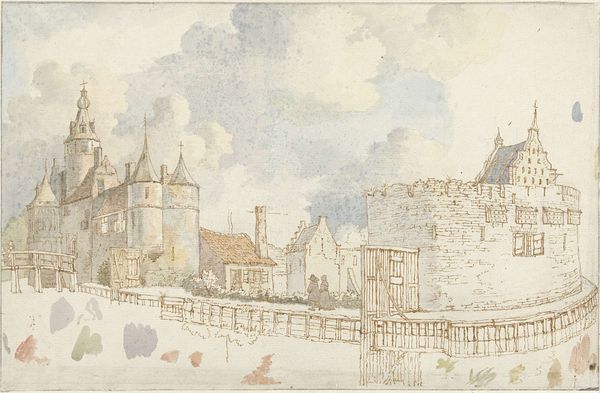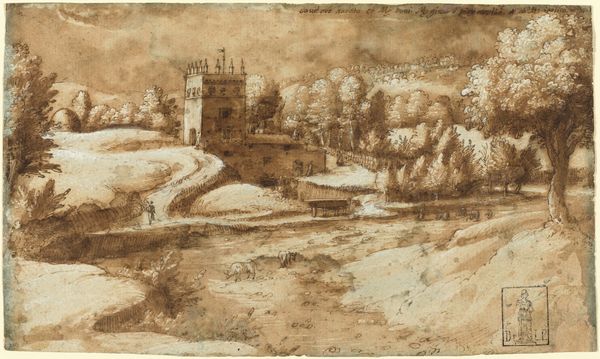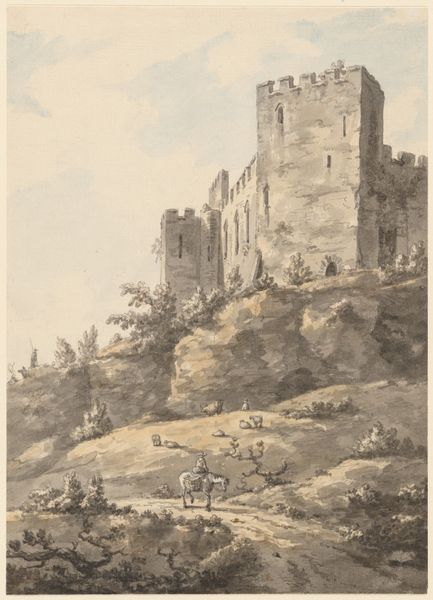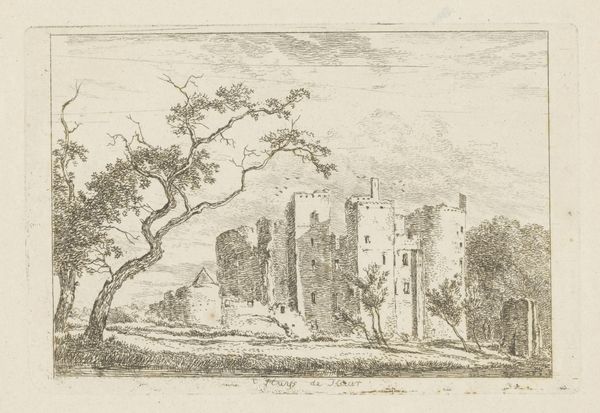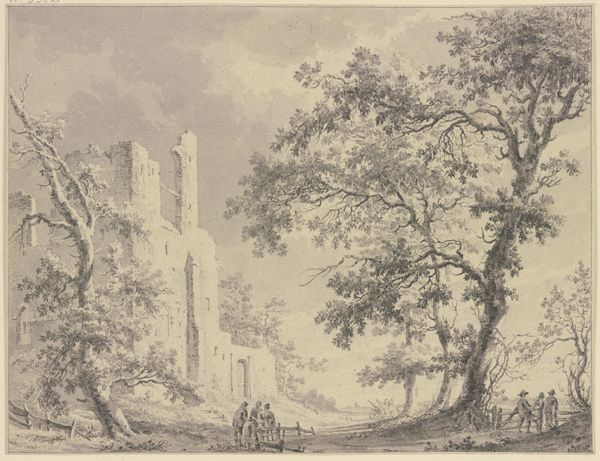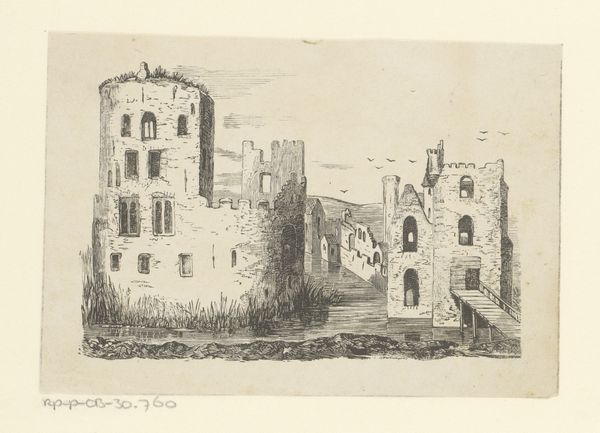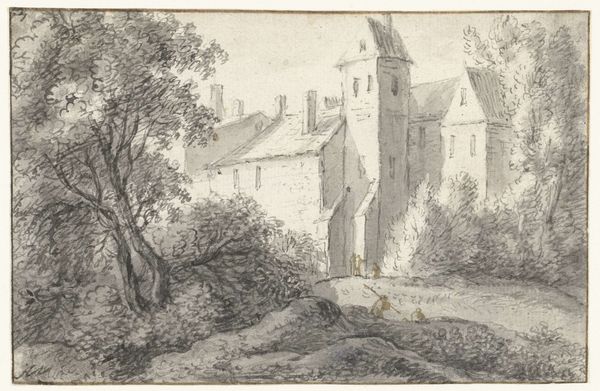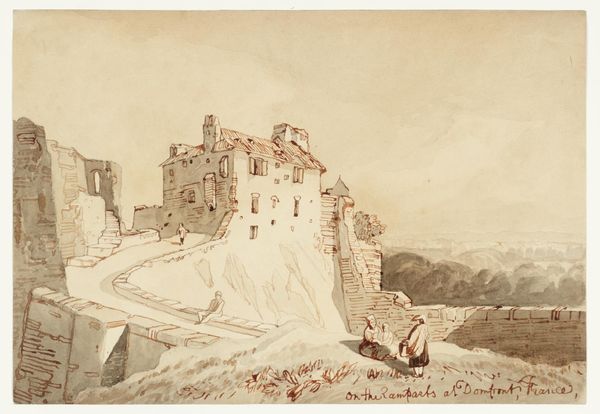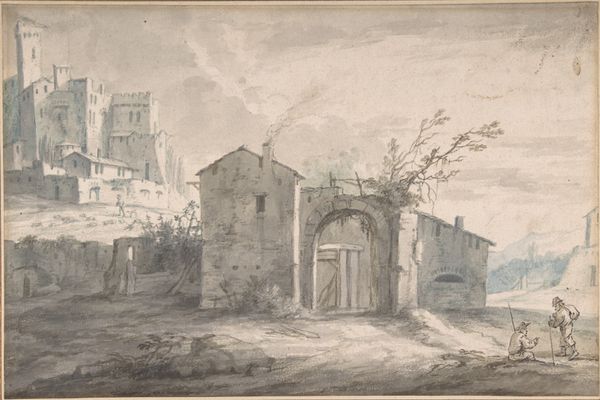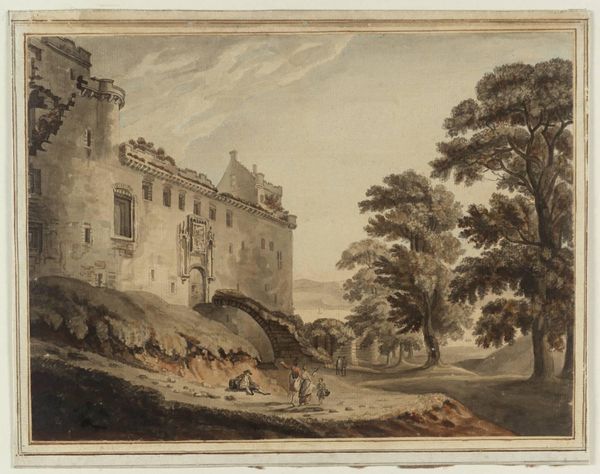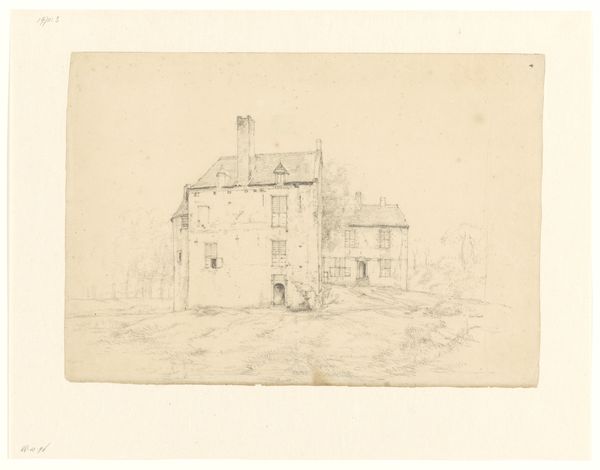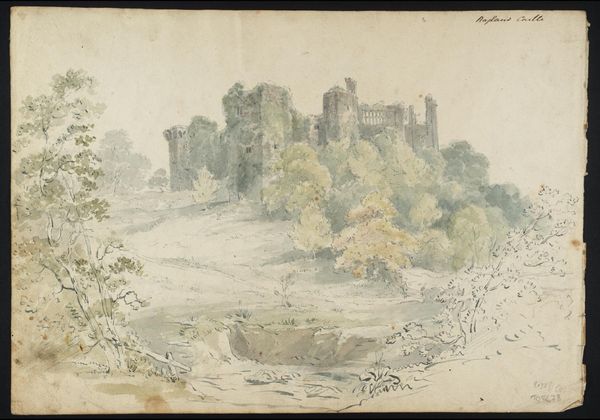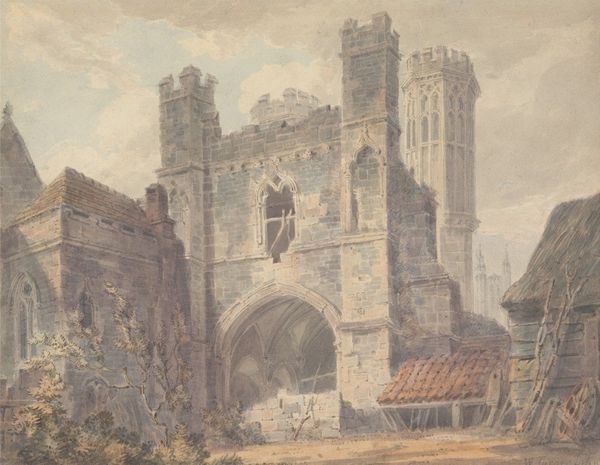
Slot med skov til venstre. Schwamenburg Slot? 1600 - 1700
0:00
0:00
drawing
#
drawing
#
toned paper
#
pencil sketch
#
charcoal drawing
#
possibly oil pastel
#
oil painting
#
underpainting
#
watercolour illustration
#
mixed medium
#
watercolor
#
warm toned green
Dimensions: 201 mm (height) x 313 mm (width) (bladmaal)
Curator: Welcome! We’re standing before Roelant Savery’s “Slot med skov til venstre. Schwamenburg Slot?” a drawing, likely done sometime between 1600 and 1700. Editor: My first impression is of a kind of quiet drama. The pale wash of the sky seems to weigh down on this imposing structure, while the forest on the left appears windswept, almost ghostly. Curator: Indeed, that stark contrast is interesting. Castles, of course, were not merely defensive structures, but powerful symbols of socio-political hierarchies. Note how Savery situates the castle on high ground—the trees on the left soften the image but cannot truly balance its authority. I wonder, who inhabited such a structure, and how did its imposing presence influence local populations? Editor: Absolutely, but look at how he's used tone. That towering structure mimics, in a way, the dynamism of the forest it contrasts, both rendered in shades of brown. The castle’s tower dominates – literally reaching for the sky. Towers are phallic symbols, a patriarchal claim to the surrounding space. Curator: An interesting read! Perhaps we could expand this into broader interpretations of the role of nobility as patriarchal structures. How the landscape supports these hierarchies needs further attention too. Editor: And note, the foliage softens the edges, creating a sense of timelessness. Castles are relics, memories, both protective and potentially dangerous. This artwork uses potent symbols of strength. The warm tones add another layer, hinting at both solidity and impermanence. Curator: Agreed. Impermanence is certainly present; even structures of power are not exempt from historical change. This piece raises the role of architecture and environment working to uphold—and ultimately challenge—inherited power structures. Editor: Exactly! It becomes a symbol open for us to ponder. A potent image, resonating through time and changing circumstances. Curator: Well, exploring its layered context and symbolism surely brings us closer to its complex place in the narratives of history. Editor: I agree. Thank you for a stimulating analysis, it shed so much light!
Comments
No comments
Be the first to comment and join the conversation on the ultimate creative platform.
